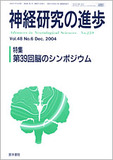Japanese
English
- 有料閲覧
- Abstract 文献概要
- 1ページ目 Look Inside
前帯状回は痛覚の情動的性質を担う領域として注目されている。しかし,実際にラットやサルの前帯状回ニューロンの性質を調べると,この領域に分布する侵害受容ニューロンは情動的側面だけでなく,痛覚に関係する様々な性質を有することが明らかになってきた。確かに,前帯状回ニューロンは刺激強度増加に対する発火頻度増加率が低く,受容野が広いなどの情動面に関与する可能性が高い。しかし,覚醒動物を用いた研究により,多くの前帯状回ニューロンは動物が注意を侵害刺激以外の光や音に移すと反応性を減弱するなど,より複雑な機能も備えている。このような結果は,前帯状回が痛覚における情動的な局面だけを担っているのではなく,“痛み”に関係する注意や予測などの,より高次な情報処理にも関与する可能性があることを示している。
There are many reports describing the functional role of the anterior cingulate cortex(ACCx)in processing noxious information as well as many other aspects, such as the emotion, attention or maternal aspect of pain. Furthermore, it has been reported that ACCx lesions increase pain threshold for peripheral noxious stimulation in animal behavior experiment. These studies revealed that the ACCx region in the cerebral cortex is involved in processing pain sensations.
Many nociceptive neurons in the ACCx have specific response characteristics to noxious stimulation as compared with nociceptive neurons in other cortical areas. Specifically, many ACCx neurons respond to noxious heat and/or mechanical stimulation of the whole body surface. Sikes and Vogt classified nociceptive neurons according to their response properties to mechanical stimulation of the receptive field, such as noxious-specific(NS)neurons and noxious-tap(NT)neurons. NS neurons exclusively responded to noxious mechanical and/or heat stimulation of the peripheral receptive fields, whereas NT neurons responded to both noxious stimulation and non-noxious tapping of the receptive field. Furthermore, Koyama et al. have identified many neurons in the ACCx of the awake behaving monkeys that responded to the cue light preceded to the noxious electrical stimulus to the paw. In our study, a majority of heat responsive ACCx neurons were significantly depressed when monkeys detected the change in the magnitude of the light illumination presented on the front panel. The neuronal activity was significantly higher when monkeys escaped from a noxious heat stimulus than that when the monkeys detected a small change in temperature shift. No relationship between firing frequency and detection latency was observed.
These findings suggest that ACCx nociceptive neurons are involved in predictive and attentional aspect of pain, as well as affective and emotional aspects of pain.

Copyright © 2004, Igaku-Shoin Ltd. All rights reserved.


